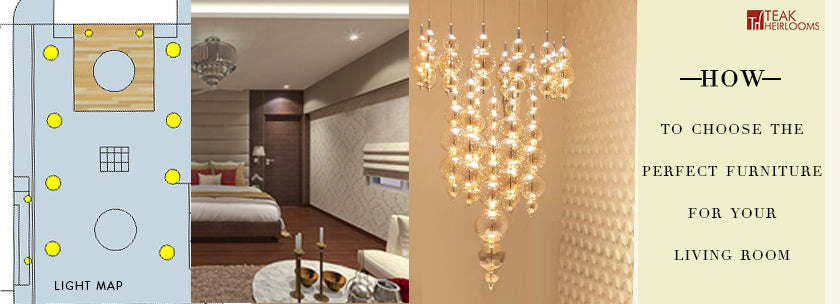In the world of interior design, layering is the business of putting together different textures, colours, fabrics and materials to create interesting, individual rooms. Layering light is quite similar: it’s about combining different kinds of light to create a particular mood or feel
It’s not only domestic interiors that use layered light to achieve a desired atmospheric effect. Think about how churches have for centuries combined lamps, torches, chandeliers, stained glass windows and candles to make beautiful sanctuaries from everyday reality. Here is a list of things to consider for indoor lighting ideas for your home.
 The three main types of lighting
The three main types of lighting
Like so many things to do with design, layering light is a bit of a mixture of art and science.
True, some people just seem to naturally have an eye for interior design and an instinct for putting stuff together in a space and making it all look awesome. But even if you don’t feel blessed with a gift for such things, there are some basic principles that anyone can learn.
When it comes to light, the key is to understand the three main types of lighting: ambient, task and accent….
Ambient lighting
Ambient lighting is the basic general illumination; the kind you need to move your way around a room without bumping into the wooden or teak furniture. In most homes, it’s the light that comes on when you flick the main switch.
Ambient lighting is like the canvas on which you paint your overall light ‘picture’. It doesn’t have to come from a single, central ceiling source like a pendent light – recess lights, wall-mounts, modern chandeliers and floor lamps can all contribute to the ambient light.
Accent lighting
Accent lighting is for aesthetic purposes – it allows you to highlight different parts of your room, or features like pictures, fireplaces or ornate pieces of furniture.
It’s also known as ‘directional light’ and can be provided by wall sconces, chandeliers, carefully-positioned lamps or small recess lights. If ambient lighting is your canvas – spreading a uniform, diffuse light across a whole room – then accent lights are your marks on the canvas, drawing attention to the bits you want people to see. Typically, accent lights should be around three times stronger than ambient lights.
Functional lighting
Task lighting is your practical light. It means that when you’re performing specific activities you can see what you’re doing.
Desk Lamps allow you to see your keyboard; pendant lights hanging from the kitchen ceiling prevent you from chopping your fingers off when preparing the vegetables; vanity lights in the bathroom save you from poking your eyes out with your toothbrush, and so on.
But again, task lighting needn’t only be practical. Lighting design, or layering, means you can use task lights in conjunction with ambient and accent light to create an overall effect.
FOR MORE HOME INTERIOR DESIGN LIGHTING IDEAS VISIT OUR WEBSITE
WWW.TEAKHEIRLOOMS.COM AND FOR CONSULTATION VISIT OUR TEAK WOOD FURNITURE STORE IN CHENNAI.

